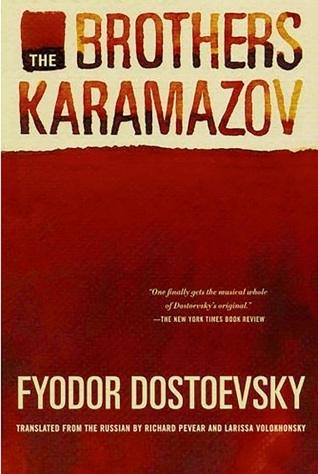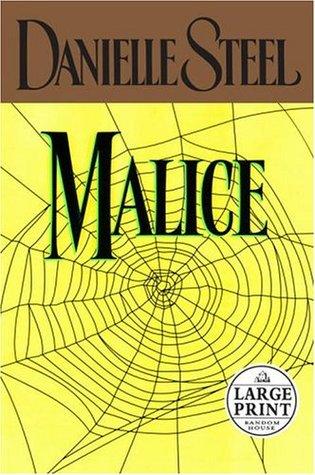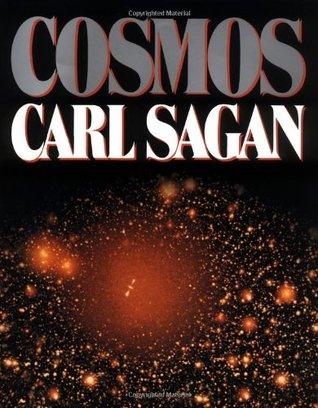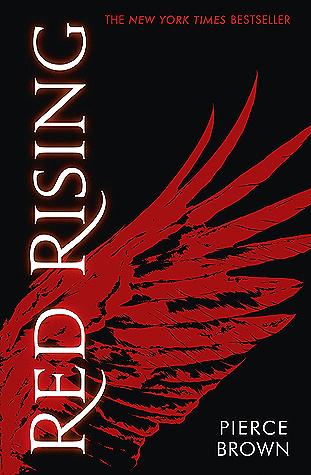The Lemon Tree: An Arab, a Jew, and the Heart of the Middle East by Sandy Tolan Book Summary
Discover the profound insights of "The Lemon Tree: An Arab, a Jew, and the Heart of the Middle East" by Sandy Tolan. This article offers a comprehensive summary, key takeaways, and an in-depth review of the book, exploring themes of conflict, identity, and hope in the Middle East. Uncover the powerful narratives that bridge cultural divides and inspire understanding.
The Lemon Tree: An Arab, a Jew, and the Heart of the Middle East Book Summary
The Lemon Tree by Sandy Tolan explores the deeply personal and complex story of an Arab and a Jew connected by a single house in the heart of the Middle East. This compelling narrative delves into themes of conflict, identity, and reconciliation, offering a human perspective on the Israeli-Palestinian struggle. Through intimate storytelling and thorough research, Tolan reveals the emotional and historical layers behind a decades-long dispute, making this book essential for anyone seeking to understand the human side of a geopolitical conflict.
Discover deeper insights and enhance your reading experience with The Watcher Book Summary, Review & Key Insights—your essential guide to understanding the book’s core messages and themes.
The Lemon Tree: An Arab, a Jew, and the Heart of the Middle East by Sandy Tolan - Introduction
I had no idea that a single lemon tree could hold so much history, pain, and hope between two families from opposite sides of the Israeli-Palestinian conflict. That’s what caught me off guard in The Lemon Tree: An Arab, a Jew, and the Heart of the Middle East by Sandy Tolan. It’s not just a history book or a political analysis—it’s a deeply personal story that made me rethink how I see this decades-old conflict.
I picked it up initially because I wanted something that went beyond headlines and soundbites—something that put real faces and emotions to the situation. What I found was a narrative that blends nonfiction, history, politics, religion, and memoir, wrapped up in a biography-style storytelling that feels intimate and honest. The book is about 400 pages, so it’s a solid read, but totally worth the time if you’re curious about the human side of war and displacement.
If you’re someone who’s ever felt overwhelmed by the complexity of the Middle East or wondered how two people from such different backgrounds could find common ground, this book is for you. It’s perfect for a book club too, because it sparks conversations that are both challenging and eye-opening.
Honestly, reading this felt like sitting down with two old friends who have a complicated past but still want to understand each other. If you want a story that’s historical yet deeply personal, this one’s a must-read.
What is The Lemon Tree: An Arab, a Jew, and the Heart of the Middle East About?
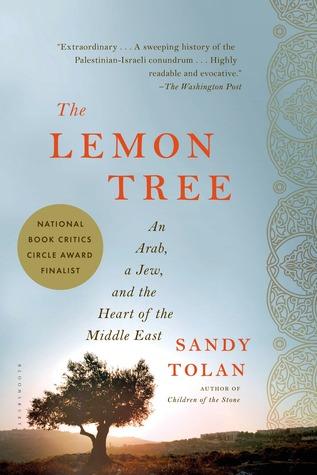
"The Lemon Tree: An Arab, a Jew, and the Heart of the Middle East" by Sandy Tolan explores the intertwined lives of a Palestinian man and an Israeli woman, symbolized by a lemon tree that represents both hope and conflict in the region. The book's main message emphasizes the possibility of understanding and reconciliation amidst deep-seated divisions. Key concepts include the personal impact of the Israeli-Palestinian conflict on individuals, the significance of shared histories and narratives, and the potential for empathy to bridge cultural divides.
About Book Author - Sandy Tolan
Ladies and gentlemen, it’s a pleasure to introduce Sandy Tolan, a remarkable storyteller whose journey led him to write "The Lemon Tree: An Arab, a Jew, and the Heart of the Middle East." Sandy didn't start out as an author; he began his career as a journalist, deeply immersed in the complexities of the Middle East, which ignited his passion for exploring the human stories behind the headlines. What’s interesting about Sandy is that he once lived in a Palestinian refugee camp, an experience that profoundly shaped his understanding of the region's narratives.
His expertise in weaving personal stories with historical context is evident not just in "The Lemon Tree," but also in his other works, like "Children of the Stone," which delves into the transformative power of music amidst conflict. Sandy is uniquely qualified to write on these topics because he approaches them with empathy, drawing from real-life experiences that resonate with readers on a personal level. Please join me in welcoming Sandy Tolan!
More Books To Find
The Lemon Tree: An Arab, a Jew, and the Heart of the Middle East - Book Overview
The Lemon Tree is really about the complex relationship between Israelis and Palestinians, told through the stories of two individuals: an Arab man and a Jewish woman. It’s not just a historical account; it’s a deeply personal narrative that humanizes both sides of the conflict, showing how their lives intertwine around a single lemon tree that symbolizes hope and division.
Sandy Tolan wrote it to bridge the gap in understanding between these two cultures. He wanted to highlight the personal stories often lost in the political rhetoric, making the conflict relatable on a human level.
What sets this book apart from others is its focus on personal narratives rather than just facts and figures. While many books dive into the history or politics, Tolan emphasizes the emotional journeys of his characters, which makes the conflict feel more tangible.
One story that really stuck with me was when the Arab man, Bashir, visits the house that once belonged to his family and reflects on the life that could have been. It’s a poignant moment that captures the bittersweet nature of memory and belonging. It’s like when you visit your childhood home, and you’re flooded with memories—both happy and sad—making you realize how much history is tied to a place.
Key Insights of The Lemon Tree: An Arab, a Jew, and the Heart of the Middle East
The Lemon Tree explores the complex relationship between Arabs and Jews in the Middle East through the intertwined stories of a Palestinian man and an Israeli woman.
1. Personal Narratives: The book emphasizes the power of personal stories in understanding larger political conflicts. By focusing on the lives of individuals, Tolan humanizes the broader issues of identity and belonging.
2. Symbolism of the Lemon Tree: The lemon tree serves as a potent symbol of hope and connection, representing the shared history and potential for reconciliation between two peoples. It illustrates how a single object can embody deep emotional ties and cultural significance.
3. Impact of War: Tolan vividly depicts how the Israeli-Palestinian conflict has shaped the lives of ordinary people. The consequences of war extend beyond politics, affecting families, communities, and personal relationships.
4. Search for Identity: The characters grapple with their identities in a land marked by division. Their journeys reflect the struggle for belonging and the quest for understanding amidst conflict, highlighting the importance of empathy in bridging divides.
5. Hope for Reconciliation: Despite the challenges, the narrative ultimately conveys a message of hope. Tolan suggests that through dialogue and understanding, there is potential for coexistence and peace, urging readers to consider the human side of the conflict.
Who Should Read This Book
"The Lemon Tree" by Sandy Tolan is essential reading for anyone interested in understanding the complexities of the Israeli-Palestinian conflict. It appeals to history enthusiasts, students of Middle Eastern politics, and those seeking a deeper emotional connection to the narratives of both Arabs and Jews. The book's dual perspective offers insights into the shared humanity and personal stories behind the headlines, making it ideal for readers who value empathy and cross-cultural understanding. Additionally, it is a compelling choice for educators and activists looking to foster dialogue and awareness about this critical issue.
Read If You Are
- Interested in understanding the complexities of the Israeli-Palestinian conflict through personal narratives.
- Seeking a deeper insight into cultural and historical perspectives that shape current Middle Eastern relations.
- Passionate about stories of hope, reconciliation, and the human connections that transcend political divides.
Skip If You Are
- looking for a purely fictional narrative without historical context
- not interested in issues related to the Israeli-Palestinian conflict
- seeking a fast-paced read with minimal emotional depth
Important Takeaways from this Book
-
Engage in a Dialogue: Reach out to someone from a different background or culture and initiate a conversation about their experiences. This matters because understanding diverse perspectives fosters empathy and reduces prejudice. Consider your comfort level; start with someone you feel safe discussing with.
-
Volunteer for a Local Community Organization: Find a local organization that promotes interfaith or intercultural dialogue and volunteer your time. This action builds community connections and enhances your understanding of others. Check for opportunities in your area online or through community boards.
-
Read Diverse Literature: Choose a book or article written by an author from a different culture or background than yours. Reading diverse perspectives broadens your worldview and cultivates empathy. Make a list of books that interest you and commit to reading one this month.
-
Practice Active Listening: In your next conversation, focus on truly listening rather than preparing your response. This matters because it shows respect and openness to others' viewpoints, creating a safe space for dialogue. Remind yourself to ask clarifying questions and avoid interrupting.
-
Reflect on Your Own Biases: Take 10 minutes to write down any biases or stereotypes you hold. Acknowledging these is the first step toward overcoming them. This self-awareness is crucial for personal growth and improving interactions with others. Be honest with yourself and approach this exercise with an open mind.
Book Review
I picked up "The Lemon Tree: An Arab, a Jew, and the Heart of the Middle East" by Sandy Tolan expecting a straightforward historical account, but what I got was a deeply personal narrative that intertwines the lives of two families amidst the Israeli-Palestinian conflict.
One of the book's greatest strengths is its storytelling. Tolan's writing style is both engaging and accessible, weaving together personal anecdotes with historical context. For instance, the way he illustrates the significance of the lemon tree as a symbol of hope and connection is powerful and evocative. I found myself emotionally invested in the characters, particularly Bashir and Dalia, as their stories unfolded against the backdrop of a complex political landscape.
However, I felt the pacing dragged in certain sections, particularly when diving into historical details that, while informative, sometimes pulled me out of the narrative. A bit more balance between personal stories and historical context would have made for a smoother read.
Compared to other books like "The Kite Runner" or "A Tale of Love and Darkness," Tolan's work leans more towards a documentary style, which might not appeal to readers looking for a fictionalized account.
Overall, I found "The Lemon Tree" to be a thought-provoking and heartfelt exploration of identity and conflict. I would recommend it to anyone interested in understanding the human side of the Middle East conflict, but those seeking a fast-paced narrative or purely historical analysis might find it less engaging.
Final Thoughts
If I'm being honest, finishing The Lemon Tree left me with a profound sense of empathy for the complexities of the Israeli-Palestinian conflict. Tolan does an incredible job of humanizing both sides, and my overall takeaway is that understanding each other's stories is crucial for any hope of peace.
I'd definitely recommend this if you're someone who wants to dive deep into the emotional and historical layers of the Middle East. It’s perfect for readers who appreciate personal narratives over dry political analysis. However, skip this one if you're looking for a straightforward political guide or a quick read; it requires some emotional investment.
The thing that surprised me most was how relatable the characters were, despite their vastly different backgrounds. Their shared experiences really highlighted our common humanity, and I know that will stick with me for months to come.
As for whether I'd read it again, I think I’d opt for the full book over a summary. There's something about Tolan's storytelling that deserves to be fully absorbed. Overall, my reading experience was enriching and eye-opening, and I’m glad I took the time to explore this nuanced narrative.
Frequently Asked Questions
How long does it take to read The Lemon Tree: An Arab, a Jew, and the Heart of the Middle East?
It typically takes around 10-12 hours to read "The Lemon Tree: An Arab, a Jew, and the Heart of the Middle East" by Sandy Tolan, depending on your reading speed. With approximately 400 pages, you can expect to spend about 1-2 weeks if reading casually.
What makes "The Lemon Tree: An Arab, a Jew, and the Heart of the Middle East" different from other books in this genre?
The Lemon Tree uniquely humanizes the Israeli-Palestinian conflict by intertwining personal narratives of an Arab and a Jew, fostering empathy and understanding. Sandy Tolan's storytelling transcends typical political discourse, offering readers a profound exploration of shared humanity amidst deep-rooted tensions.
Who is the target audience for The Lemon Tree: An Arab, a Jew, and the Heart of the Middle East
The target audience for "The Lemon Tree" includes readers interested in Middle Eastern history, cultural narratives, and peace studies. It appeals to those seeking to understand the complexities of Arab-Israeli relations through personal stories, making it relevant for students, educators, and general readers passionate about social justice and empathy.
Are there any criticisms or limitations of The Lemon Tree: An Arab, a Jew, and the Heart of the Middle East
Critics argue that the book may oversimplify complex historical narratives and present a biased perspective. Some readers feel it lacks depth in exploring broader political contexts, while others believe it focuses too much on personal stories at the expense of larger systemic issues in the Israeli-Palestinian conflict.
What is the main theme of The Lemon Tree: An Arab, a Jew, and the Heart of the Middle East by Sandy Tolan
The main theme of "The Lemon Tree" revolves around the complexities of identity, coexistence, and the Israeli-Palestinian conflict. Through the intertwined stories of an Arab and a Jew, it explores themes of hope, empathy, and the possibility of reconciliation amidst deep-rooted historical tensions.
Tags:
a Jew, and the Heart of the Middle East, and the Heart of the Middle East Author, and the Heart of the Middle East Book, and the Heart of the Middle East Book Description, and the Heart of the Middle East Book Rating, and the Heart of the Middle East Book Review, and the Heart of the Middle East by Sandy Tolan, and the Heart of the Middle East ISBN, and the Heart of the Middle East Short Summary, Sandy Tolan, The Lemon Tree: An Arab

Michel Fisher
Michel Fisher is a passionate fiction enthusiast and book blogger who writes about emotional reads, character-driven stories, and contemporary romance authors that captivate hearts and minds.

The Lemon Tree: An Arab, a Jew, and the Heart of the Middle East
Book Overview
Description
In 1967, Bashir Al-Khayri, a Palestinian twenty-five-year-old, journeyed to Israel, with the goal of seeing the beloved old stone house, with the lemon tree behind it, that he and his family had fled nineteen years earlier. To his surprise, when he found the house he was greeted by Dalia Ashkenazi Landau, a nineteen-year-old Israeli college student, whose family fled Europe for Israel following the Holocaust. On the stoop of their shared home, Dalia and Bashir began a rare friendship, forged in the aftermath of war and tested over the next thirty-five years in ways that neither could imagine on that summer day in 1967. Based on extensive research, and springing from his enormously resonant documentary that aired on NPR’s Fresh Air in 1998, Sandy Tolan brings the Israeli-Palestinian conflict down to its most human level, suggesting that even amid the bleakest political realities there exist stories of hope and reconciliation.
Key Points
Personal stories humanize conflict
Characters
Publisher
Bloomsbury USA
First Publish Date
2/5/2006
Awards
National Book Critics Circle Award Nominee for General Nonfiction (2006)

